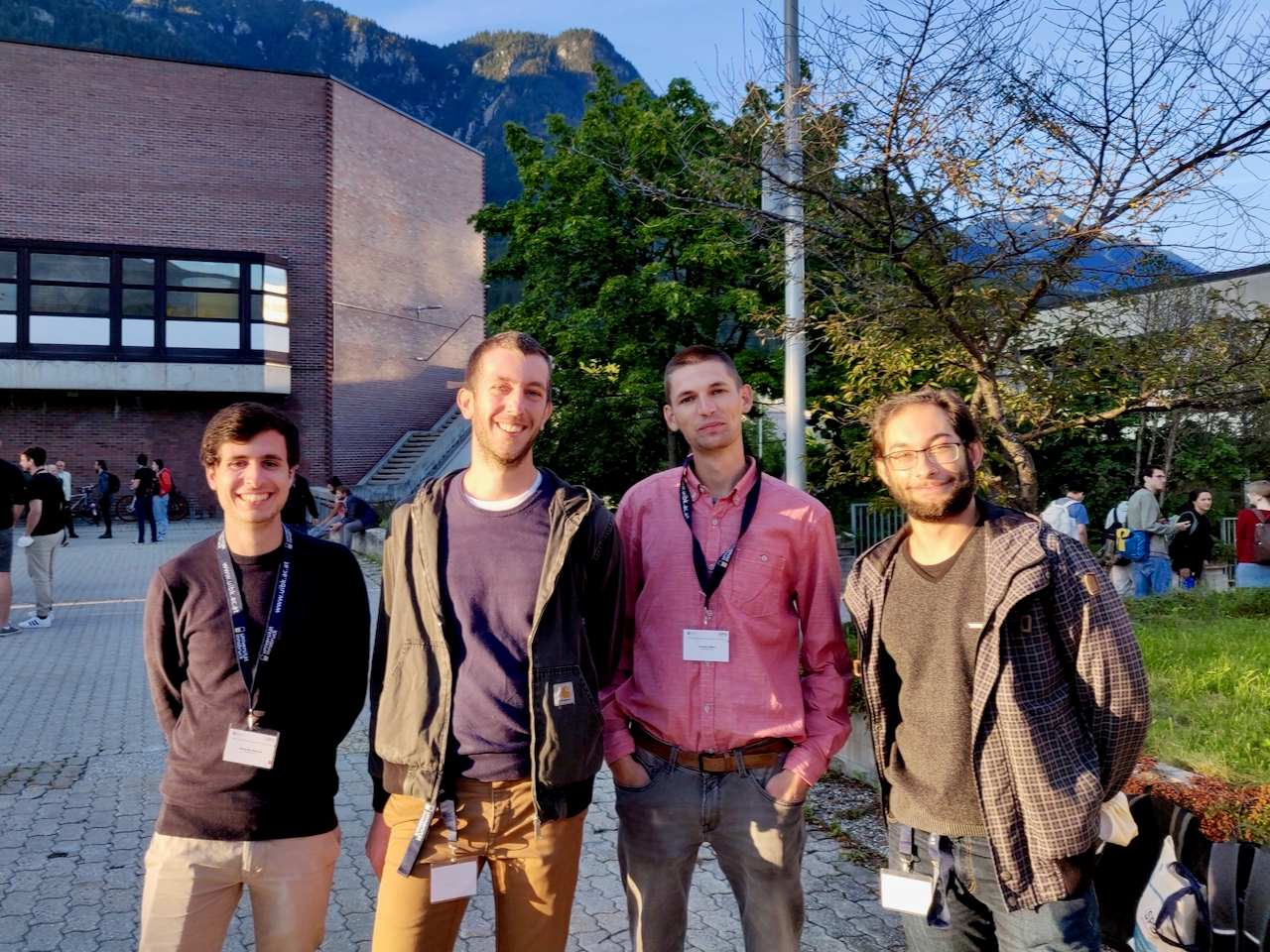Talks and posters at the joint annual SPS/ÖPG meeting and TAUP 2021
Laura Baudis and the Phd students Alexander Bismark, Yannick Müller, Ricardo Peres, and Giovanni Volta participated in the joint annual meeting of ÖPG and SPS.

The meeting was held with in-person attendance in Innsbruck. Laura introduced DARWIN as a next-generation observatory for dark matter and neutrino physics which is projected to pursue a broad physics program: from probing WIMPs down to the neutrino floor to solar neutrinos, supernova detection and neutrinoless double-beta decay. Alex talked about the upgrade of the germanium counting facility Gator. This facility is used to screen and select radiopure materials for low-background experiments. Yannick presented the planned LEGEND neutrinoless double-beta decay experiment, which will supersede the current generation of germanium neutrinoless double-beta decay experiments with more active mass and lowered backgrounds. Ricardo gave an overview of the recent progress of XENONnT. XENONnT has finished commissioning and started taking science data. Giovanni presented his study on nucleon disappearance in XENON1T. The observation of such a process would provide crucial hints for understanding the baryon-asymmetry of the Universe.
In parallel M. Sc. student Simon Buse and postdoc Christian Wittweg attended the online-only TAUP 2021 conference. Although the conference took place online, the organizers had prepared a digital venue resembling the conference’s original destination Valencia. Simon presented a poster on new constraints on strongly interacting sub-GeV dark matter via electron scattering. These limits were derived using the small-scale above-ground Xurich detector at UZH. Christian’s poster discussed the detection prospects for the second-order weak decays of Xe-124 with upcoming large-scale XENON detectors such as DARWIN. In case of a positive detection of neutrinoless double-beta decay, 124Xe decays could help with understanding the mechanism mediating the process.